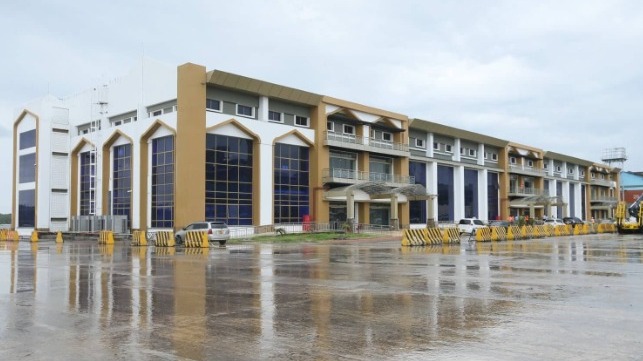Kenya's New Cruise Terminal Sits Idle Due to Omicron Disruption

The commissioning of an $11 million cruise ship terminal at Kenya’s Mombasa port remains in limbo as the COVID-19 pandemic continues to disrupt the global cruise industry.
In the middle of last year, Kenya completed the construction of the ultra-modern terminal, which was built to attract more cruise lines and spur growth in the vital tourism industry. In Kenya, tourism accounts for 4.4 percent of gross domestic product. The East Africa nation is the third largest travel and tourism destination in sub-Saharan Africa after South Africa and Nigeria.
However, the new facility has remained idle - largely because of the disruption of the cruise industry by COVID-19. “The terminal was completed last year in June, but the government is not in a hurry to commission it owing to the circumstances facing the cruise industry globally,” said Peter Njanga, a tour operator.
Located at berth 1 at the Mombasa port, the terminal includes duty-free shops, restaurants, conference facilities and offices. With a capacity to handle 2,000 passengers, the terminal was supposed to position Kenya as a top cruise tourism destination and enable the country to compete with neighboring countries like South Africa, Seychelles, Mauritius, Cape Verde and Zanzibar, among others.
The Kenyan government believes that once it begins operations, the terminal will create close to 300 direct jobs and boost local industries, like the transport sector, hotels, restaraunts and handicraft sellers.
COVID-19 has put these hopes on hold, and the new terminal yet to receive even a single cruise ship. The global cruise industry, which was on the road to recovery last year, has been disrupted again by the Omicron variant. Major cruise lines have once again been forced to alter or suspend some voyages due to surging case numbers and national travel restrictions.
Kenya's tourism industry has also slowed. Government data show that 2020 was the worst year in terms of the sector’s performance, with the number of international arrivals plummeting by 72 percent from two million in 2019 to 579,600. The year saw earnings decline by 44 percent from $1.4 billion in 2019 to $800 million. Last year, the industry witnessed a rebound, with arrivals increased by 53 percent to 870,465.
